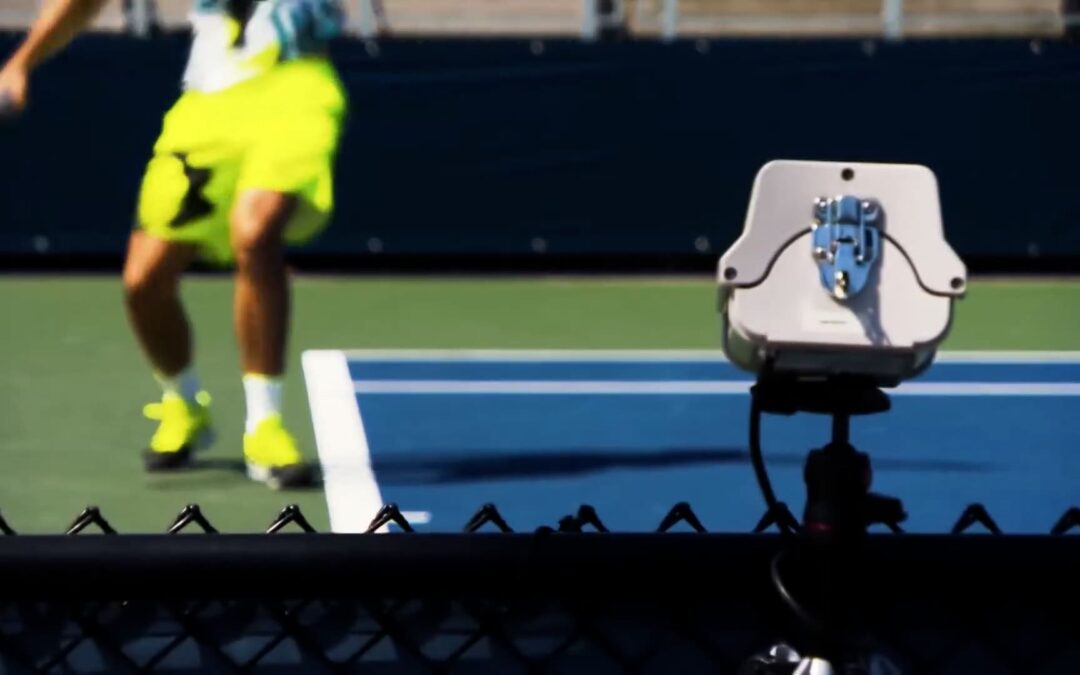Since 2022, the U.S. Open has had no line judges. Instead, the tournament uses Hawk-Eye Live, an electronic line-calling system, to determine whether a tennis shot is in or out.
Electronic line-calling has been around tennis since the 1980s, dating back to Cyclops, a system used during Wimbledon to judge if a ball was in play or not.
“It planted the seed for what was to come and the fact that there were other ways to do it than relying on human eyes and human error,” said Christopher Clarey, a former New York Times tennis reporter and author of “The Master,” a biography on Roger Federer.
Sports technology is getting more advanced, whether it’s in soccer, basketball or motorsports. Hawk-Eye was invented by Paul Hawkins in 1999 and first made its debut in cricket for broadcasting purposes. Today, it’s used in more than 20 major sports leagues.
In 2003, Hawk-Eye made its tennis debut but solely for broadcasting purposes. However, things changed after a 2004 U.S. quarterfinal match between Serena Williams and Jennifer Capriati.
“The reason Hawk-Eye became a thing was because they were calling my balls out,” Serena Williams, the 23-time Grand Slam champion, said on Spotify’s “Archetypes” podcast. “Every time I hit a ball, they would call it out. No matter how close it was or how far it was.”
In the third set, Williams was a victim of multiple bad calls in critical moments, which sparked outrage from broadcast commentators and from viewers at home.
“During that match, the U.S. Open was trialing a Hawk-Eye system,” said Clarey. “The public had more information than the players. So, there was this big disparity between what people could see and what was actually happening on the court.”
After the match, Williams received an apology and the umpire was dismissed. The mishaps of the match forced the International Tennis Federation to reevaluate how things were done, and in 2005 it approved electronic line-calling for matches.
The Covid-19 pandemic expanded the need for Hawk-Eye and accelerated its implementation throughout tennis. In 2020, the U.S. Open played without line judges on all but two of the main courts, and in 2021, the Australian Open became the first Grand Slam tournament to play completely without line judges. In 2022, the U.S. Open followed suit.
“In total here, we have 204 cameras…tracking the ball and the player across all 17 courts at the U.S. Open, ” said Ben Figueiredo, the director of tennis at Hawk-Eye Innovations. “We have 12 tracking cameras around all the courts. And then we also have six foot-fault cameras.”
Hawk-Eye says the equipment for one court costs nearly $100,000 and takes about three days to set up. The cameras track the ball at 340 frames per second and transfer images immediately to the Hawk-Nest, where an “in” or “out” call can be made.
“The accuracy of Hawk-Eye is millimeter accurate,” said Figueiredo.
Hawk-Eye, which was acquired by Sony in 2011, is used for officiating at all of the major Grand Slam tournaments except at the French Open, which is played on clay.
“Hawk-Eye is approved on the surface of clay,” said Figueiredo. “It’s the tournament’s choice as to whether they use Hawk-Eye.”
Craig O’Shannessy, the director of Brain Game Tennis and a tennis strategy coach who has worked with Novak Djokovic, believes that many people in the sport want Hawk-Eye on clay.
“Everybody wants it,” he said. “We’ve still got too much controversy. It’s time that it’s just a standard across all surfaces and all countries in our sport.”
The system is also used in other major American sports, including the WNBA, MLS and NFL. In the upcoming NBA season, Hawk-Eye will be used for skeletal tracking and officiating support.
“The NBA have chosen Sony and Hawk-Eye technology because it raises the level of their game,” said Theresa Alesso, president of Imaging Products and Solutions Americas at Sony. “Our goal is really to make sports safer, fairer and more exciting for the fans.”
The sports technology market is estimated to reach $25.7 billion by 2030, representing 26% growth from this year, according to Meticulous Market Research.
“It’s a huge, huge appetite for Hawk-Eye,” said Figueiredo. “Not just from an officiating perspective but also from a data-collection perspective.”
Watch the video to learn more about Hawk-Eye and its growth under Sony.









